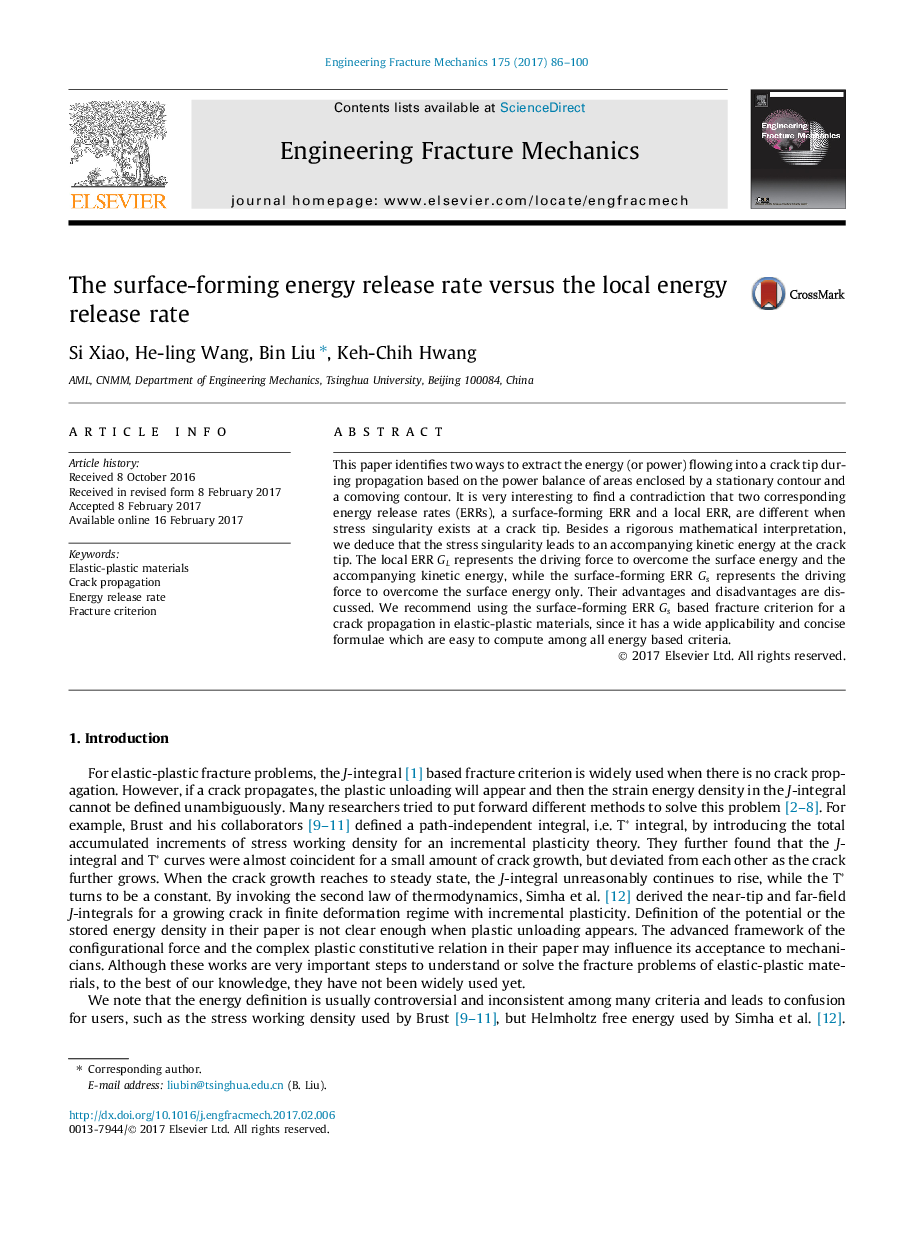| Article ID | Journal | Published Year | Pages | File Type |
|---|---|---|---|---|
| 5013992 | Engineering Fracture Mechanics | 2017 | 15 Pages |
Abstract
This paper identifies two ways to extract the energy (or power) flowing into a crack tip during propagation based on the power balance of areas enclosed by a stationary contour and a comoving contour. It is very interesting to find a contradiction that two corresponding energy release rates (ERRs), a surface-forming ERR and a local ERR, are different when stress singularity exists at a crack tip. Besides a rigorous mathematical interpretation, we deduce that the stress singularity leads to an accompanying kinetic energy at the crack tip. The local ERR GL represents the driving force to overcome the surface energy and the accompanying kinetic energy, while the surface-forming ERR Gs represents the driving force to overcome the surface energy only. Their advantages and disadvantages are discussed. We recommend using the surface-forming ERR Gs based fracture criterion for a crack propagation in elastic-plastic materials, since it has a wide applicability and concise formulae which are easy to compute among all energy based criteria.
Related Topics
Physical Sciences and Engineering
Engineering
Mechanical Engineering
Authors
Si Xiao, He-ling Wang, Bin Liu, Keh-Chih Hwang,
